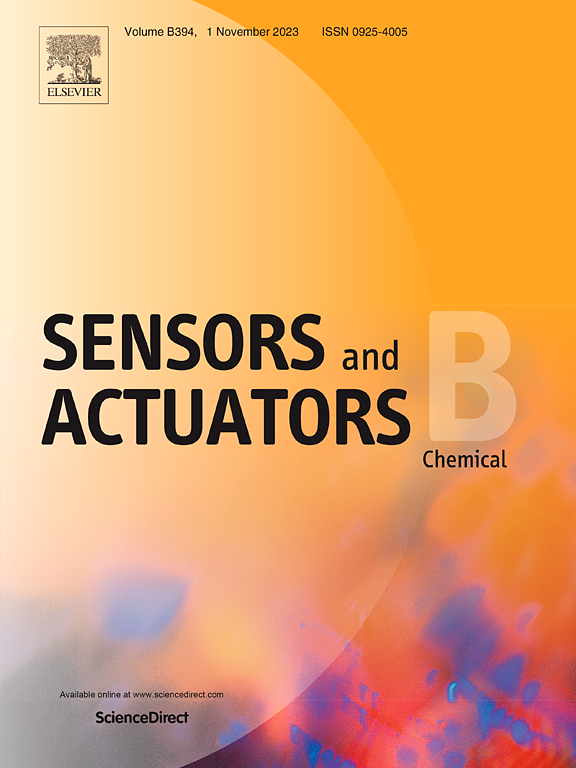靶向脂滴极性荧光探针在乳腺癌术中病理诊断中的应用
IF 8
1区 化学
Q1 CHEMISTRY, ANALYTICAL
引用次数: 0
摘要
准确的术中病理诊断对有效的手术治疗至关重要。然而,基于苏木精-伊红(H&;E)染色冷冻切片的传统方法由于各种因素往往存在准确性限制。在这项研究中,我们开发了一种新的、高效的方法,利用脂滴(ld)靶向荧光探针,命名为NA-LD,用于乳腺癌术中病理诊断。由于分子内电荷转移(ICT)效应,NA-LD对环境极性变化表现出超灵敏的荧光响应,从而实现了ld的高保真成像。有趣的是,该探针能够通过观察ld特征的差异,包括极性、数量和大小,来区分乳腺癌细胞和正常细胞。此外,还利用dna - ld实现了小鼠肿瘤模型的识别。最重要的是,它已经成功地应用于判断术中乳腺病变的良恶性,以及鉴别导管原位癌(DCIS)和浸润性导管癌(IDC)。因此,这项工作可能为乳腺癌患者的精确诊断和个性化治疗提供新的见解。本文章由计算机程序翻译,如有差异,请以英文原文为准。

Intraoperative pathological diagnosis for breast cancer with a polarity fluorescent probe targeting lipid droplets
Precise intraoperative pathological diagnosis is crucial for effective surgical management. However, conventional method based on hematoxylin-eosin (H&E) staining of frozen sections often suffers from accuracy limitations due to a variety of factors. In this study, we developed a novel and efficient method utilizing a lipid droplets (LDs)-targeted fluorescent probe, named NA-LD, for intraoperative pathological diagnosis of breast cancer. Owing to the intramolecular charge transfer (ICT) effect, NA-LD exhibited ultrasensitive fluorescence responses to environmental polarity changes, enabling high-fidelity imaging of LDs. Interestingly, the probe was capable of differentiating breast cancer cells from normal ones by visualizing the difference of LDs characteristics, including polarity, number and size. Furthermore, using NA-LD the discrimination of tumor in a mouse model was achieved. Most importantly, it has been successfully applied in determining the benign or malignant nature of the intraoperative breast lesion, as well as in discriminating ductal carcinoma in situ (DCIS) and invasive ductal carcinoma (IDC). Therefore, this work may provide novel insights for the precise diagnosis and personalized treatment of breast cancer patients.
求助全文
通过发布文献求助,成功后即可免费获取论文全文。
去求助
来源期刊

Sensors and Actuators B: Chemical
工程技术-电化学
CiteScore
14.60
自引率
11.90%
发文量
1776
审稿时长
3.2 months
期刊介绍:
Sensors & Actuators, B: Chemical is an international journal focused on the research and development of chemical transducers. It covers chemical sensors and biosensors, chemical actuators, and analytical microsystems. The journal is interdisciplinary, aiming to publish original works showcasing substantial advancements beyond the current state of the art in these fields, with practical applicability to solving meaningful analytical problems. Review articles are accepted by invitation from an Editor of the journal.
 求助内容:
求助内容: 应助结果提醒方式:
应助结果提醒方式:


